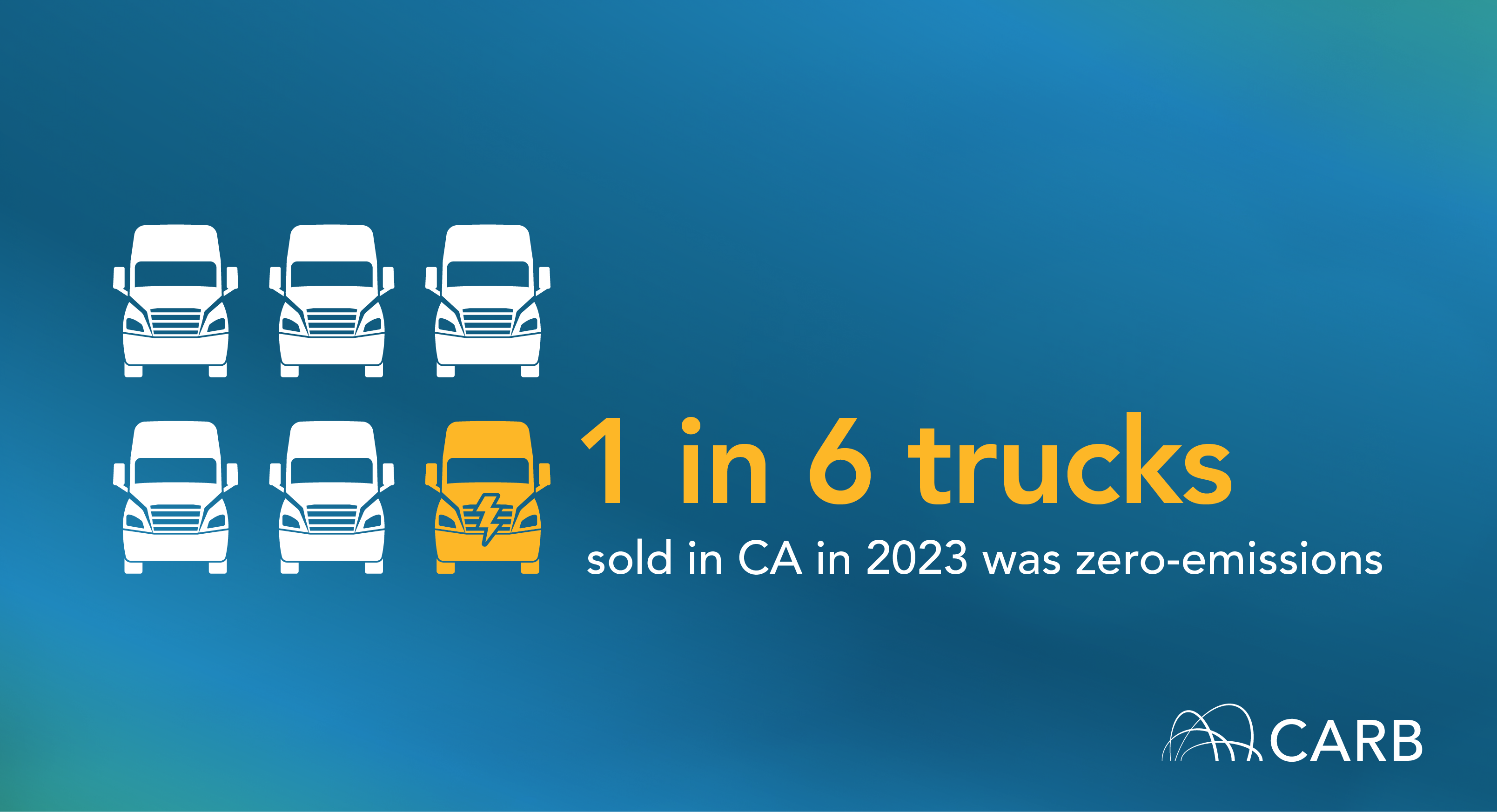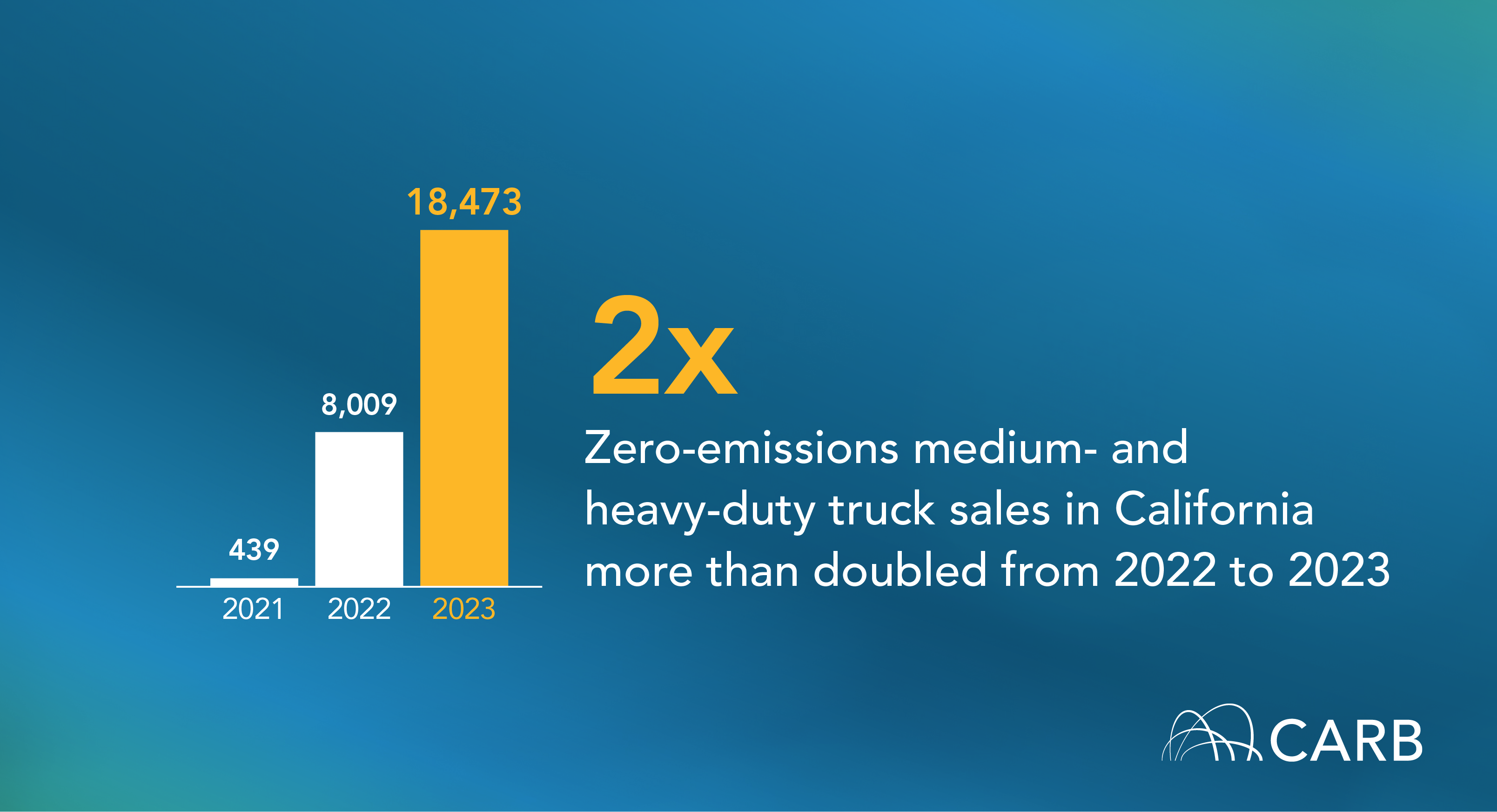SACRAMENTO — The sales of new zero-emission medium- and heavy-duty trucks in California in 2023 have doubled from the prior year, now representing 1 out of every 6 new vehicles sold for services that include last-mile delivery, freight transportation, and school buses, according to a report released by the state today.
With 18,473 medium- and heavy-duty ZEVs sold in California in 2023, the state has exceeded its Advanced Clean Trucks (ACT) goal two years ahead of schedule and selling five times the required amount. Since 2021, a total of 26,921 medium- and heavy-duty ZEVs have been sold in California.
“California is once again proving what can be done by turning ambition into action. We’re achieving our goals years ahead of schedule. The fifth biggest economy in the world is moving away from dirty polluting big rigs and delivery fleets – cleaning our air and protecting public health.” Governor Gavin Newsom
The latest figures are a preliminary look at annual data that tracks sales of medium- and heavy-duty vehicles in California and points to continued momentum for zero-emission vehicles ahead of rules that start phasing in later this year requiring the gradual deployment of clean vehicle technology for fleets.
“California set visionary targets to move key transportation sectors toward zero-emissions technology and the market is stepping up to be part of the solution for cleaner air and climate action well ahead of required targets,” said CARB Chair Liane Randolph. “The data shows that the future is zero-emissions and that fleets are finding value in making the switch early.”


Why it matters
- The Advanced Clean Trucks and Advanced Clean Fleets regulations establish a phased-in shift toward sales and use of zero-emission technology.
- California communities that sit near trucking corridors and warehouse locations with heavy truck traffic, which often are low-income and communities of color, have some of the worst air in the nation.
- While trucks represent only 6% of the vehicles on California’s roads, they account for over 35% of the state’s transportation-generated nitrogen oxide emissions and a quarter of the state’s on-road greenhouse gas emissions.
How we got here
- Advanced Clean Trucks requires manufacturers of medium- and heavy-duty vehicles to phase-in the sale of zero-emission options in California as an increasing percentage of sales.
- A similar rule has been adopted by 10 other states, including New York, New Jersey, New Mexico, Massachusetts, Washington, Oregon, Vermont, Colorado, Rhode Island and Maryland. Together, these 11 states represent over 25% of new heavy-duty vehicle registrations annually in the nation.
- The Advanced Clean Fleets regulation includes a first-of-its kind requirement for all medium- and heavy-duty vehicles sold into California fleets to be zero-emissions beginning in 2036 and is expected to introduce 1,690,000 ZEVs into the California fleets by 2050.
- To ensure that the needed technology will be available to meet upcoming milestones, CARB and the nation’s leading truck and engine companies signed the Clean Truck Partnership in July 2023, which commits participating manufacturers to meeting California’s vehicle standards, regardless of whether any other entity challenges California’s authority to set more stringent emissions standards under the federal Clean Air Act. In turn, CARB has agreed to work collaboratively with manufacturers to provide more flexibility in meeting CARB’s requirements.
More Information
CARB's mission is to promote and protect public health, welfare, and ecological resources through effective reduction of air pollutants while recognizing and considering effects on the economy. CARB is the lead agency for climate change programs and oversees all air pollution control efforts in California to attain and maintain health-based air quality standards....
Read the full news release here












